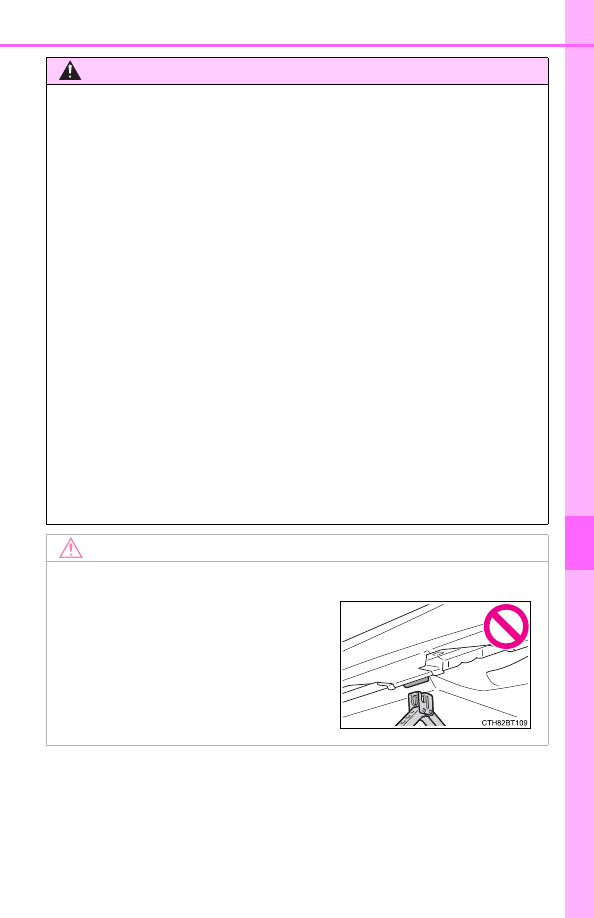Toyota Camry Hybrid (2018 year). Instruction - part 32

497
7-2. Steps to take in an emergency
7
W
hen
troub
le
arises
WARNING
■
Using the tire jack
Observe the following precautions.
Improper use of the tire jack may cause the vehicle to suddenly fall off
the jack, leading to death or serious injury.
●
Do not use the tire jack for any purpose other than replacing tires or
installing and removing tire chains.
●
Only use the tire jack that comes with this vehicle for replacing a flat
tire.
Do not use it on other vehicles, and do not use other tire jacks for
replacing tires on this vehicle.
●
Put the jack properly in its jack point.
●
Do not put any part of your body under the vehicle while it is supported
by the jack.
●
Do not start the hybrid system or drive the vehicle while the vehicle is
supported by the jack.
●
Do not raise the vehicle while someone is inside.
●
When raising the vehicle, do not put an object on or under the jack.
●
Do not raise the vehicle to a height greater than that required to
replace the tire.
●
Use a jack stand if it is necessary to get under the vehicle.
●
When lowering the vehicle, make sure that there is no-one near the
vehicle. If there are people nearby, warn them vocally before lowering.
NOTICE
■
To prevent damage to the vehicle when using a jack
When jacking up the rear of the vehi-
cle, make sure not to position the jack
under the bracket shown in the illustra-
tion near the rear jack point, as the
vehicle body may be damaged.